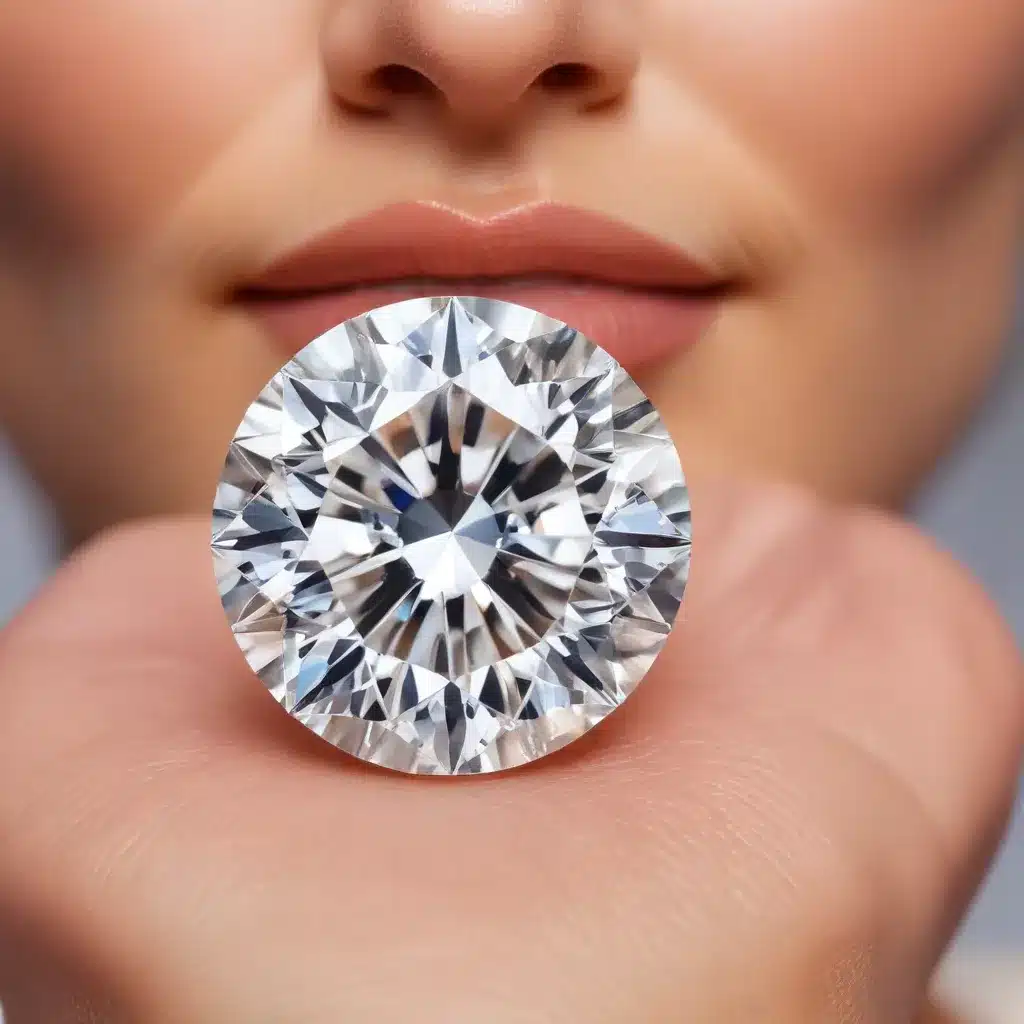
In the world of gemstones, diamonds have long been revered for their unparalleled brilliance, durability, and rarity. However, the high cost of natural diamonds has led to the emergence of alternative options, one of which is cubic zirconia. As a synthetic gemstone, cubic zirconia offers a stunning and more affordable alternative to its natural counterpart, making it an increasingly popular choice for jewelry enthusiasts and those seeking to add a touch of sparkle to their lives.
The Rise of Cubic Zirconia
Cubic zirconia, also known as CZ, is a lab-created crystalline form of zirconium dioxide. It was first synthesized in 1937 and has since become a widely used diamond simulant, providing a visually similar appearance at a fraction of the cost. The manufacturing process involves heating zirconium oxide powder to extremely high temperatures, transforming it into a melt that is then cooled to form the cubic zirconia crystals.
Compared to natural diamonds, which are formed over billions of years deep within the Earth’s crust, cubic zirconia is a relatively young gemstone. Its rapid growth in popularity can be attributed to its ability to mimic the optical properties of diamonds, offering a stunning and affordable alternative for those seeking the look of a diamond without the hefty price tag.
Characteristics of Cubic Zirconia
One of the primary factors that sets cubic zirconia apart from natural diamonds is its hardness. While diamonds rank a 10 on the Mohs hardness scale, cubic zirconia scores a respectable 8 to 8.5, making it durable enough for everyday wear, but slightly more prone to scratches and abrasions over time.
In terms of appearance, cubic zirconia is often indistinguishable from a diamond to the naked eye. Its high refractive index (2.15-2.18) gives it a brilliant, sparkling appearance, and it can be cut and polished to resemble the precise faceting of a diamond. However, cubic zirconia lacks the natural inclusions and color variations that make each diamond unique, resulting in a more uniform and flawless appearance.
While cubic zirconia may not possess the same level of fire and dispersion as a diamond, its ability to mimic the overall visual qualities of a diamond makes it a compelling choice for those seeking an affordable alternative. Additionally, the availability of colored cubic zirconia stones allows for the creation of vibrant and unique jewelry pieces.
The Advantages of Cubic Zirconia
The primary advantage of cubic zirconia is its cost-effectiveness. Compared to natural diamonds, which can be prohibitively expensive, cubic zirconia offers a budget-friendly option for those seeking the stunning appearance of a diamond without the hefty price tag. This makes it an attractive choice for engagement rings, wedding bands, and a wide range of other jewelry items.
In addition to its affordability, cubic zirconia also boasts impressive durability. While it may not be as hard as a diamond, its Mohs hardness of 8 to 8.5 makes it resistant to scratches and damage, ensuring that it can withstand the rigors of everyday wear. Furthermore, cubic zirconia is a conflict-free and eco-friendly gemstone, as it is entirely lab-created without relying on mining operations.
Another noteworthy advantage of cubic zirconia is its versatility. The synthetic nature of the gemstone allows for a wide range of customization options, from various cuts and shapes to an array of colors. This diversity enables jewelry designers to create unique and personalized pieces that cater to the individual preferences of their customers.
Considerations when Purchasing Cubic Zirconia Jewelry
When purchasing cubic zirconia jewelry, it is essential to consider the quality and origin of the gemstone. While cubic zirconia is generally less expensive than natural diamonds, there can be variations in the level of clarity, cut, and overall craftsmanship. It is recommended to purchase cubic zirconia jewelry from reputable retailers or manufacturers who can provide information about the stone’s specifications and ensure its authenticity.
Proper care and maintenance are also crucial for preserving the beauty and longevity of cubic zirconia jewelry. Unlike diamonds, which are relatively low-maintenance, cubic zirconia may require more frequent cleaning and attention to prevent the buildup of dirt, oils, or other contaminants that can dull the stone’s shine.
Cubic Zirconia in the Jewelry Market
The global cubic zirconia market has experienced significant growth in recent years, driven by the increasing demand for affordable and sustainable alternatives to natural diamonds. As consumers become more conscious of the environmental and ethical implications of diamond mining, cubic zirconia has emerged as a popular choice for those seeking a more ethically-sourced gemstone option.
Cubic zirconia’s versatility and customization potential have also contributed to its rising popularity in the jewelry industry. Jewelry designers and brands have embraced the use of cubic zirconia, incorporating it into a wide range of styles and settings to cater to the diverse preferences of their customers.
The Future of Cubic Zirconia
As technological advancements continue to shape the gemstone industry, the future of cubic zirconia looks promising. Ongoing research and development in the field of synthetic gemstone production may lead to further improvements in the quality, durability, and affordability of cubic zirconia, making it an even more attractive alternative to natural diamonds.
Moreover, the growing emphasis on sustainable and ethical consumption practices is likely to drive an increased demand for lab-created gemstones like cubic zirconia, as consumers seek out more environmentally-conscious options. As the perception and acceptance of cubic zirconia continue to evolve, it may well become an increasingly popular choice for those seeking a beautiful and affordable gemstone that aligns with their values and lifestyle.
In conclusion, cubic zirconia offers a compelling alternative to natural diamonds, providing a cost-effective and visually stunning option for those seeking to add a touch of sparkle to their lives. With its impressive characteristics, versatility, and growing market presence, cubic zirconia has firmly established itself as a gemstone of choice for jewelry enthusiasts and those seeking a more accessible path to the brilliant beauty of a diamond.

